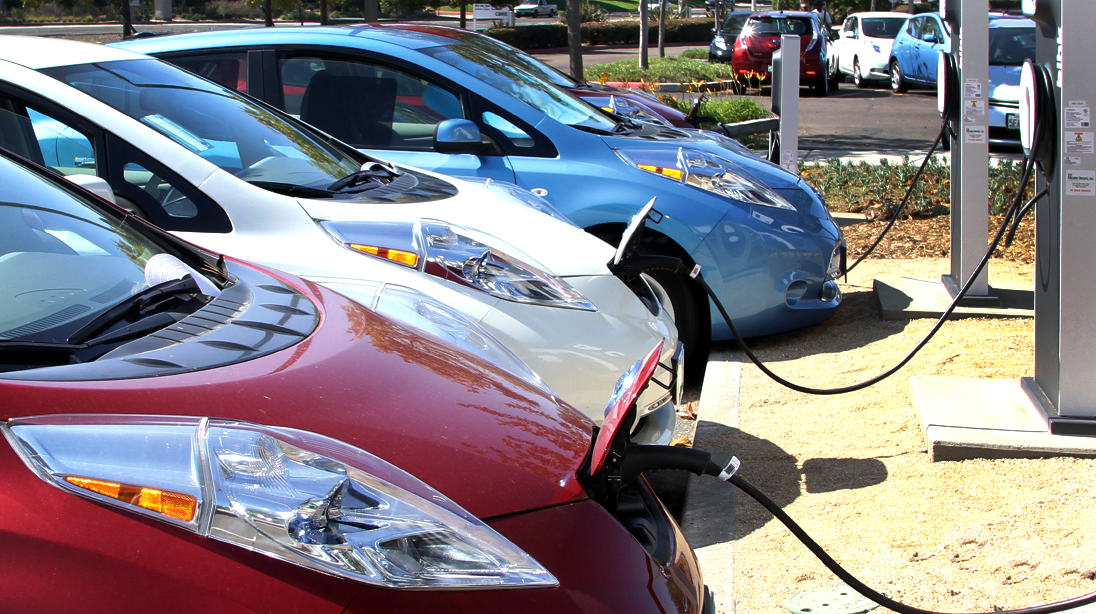


When public fleets turn to electric vehicles (EVs) to reduce emissions and curb costs, they face new challenges to monitoring vehicle use that require special attention. As administrators of the California Air Resources Board’s Public Fleet Pilot Project, the Center for Sustainable Energy (CSE) has gathered EV fleet performance data to learn about best practices for tracking EV fleet utilization.
Lower total cost of ownership and emissions reductions, which are the primary advantages of EVs, are directly tied to the utilization rate. If staff rarely drive EVs or fail to regularly charge plug-in hybrid electric vehicles (PHEVs) and drive in gasoline mode, EVs will not save the fleet money on fuel or make a significant impact on reducing emissions. The key is to think critically about how to maximize the benefits of fleet electrification by achieving high utilization rates.
Through interviews with public fleet operators who have integrated EV use, CSE transportation experts have assembled information on three key issues for fleets to consider to improve EV operations.
Monitoring & tracking
Conventional means for recording vehicle miles traveled (VMT) and fuel logging don’t work well for EVs, requiring new processes for analyzing mileage data. Some EVs don’t have the dashboard capability to read electric vehicle miles traveled (eVMT), and PHEVs are complicated by the need to record both gas and electric mileage. According to CSE’s interviews, performance monitoring for these metrics among fleets is rare.
When attempted at all, the most common approach is to manually record eVMT from the vehicle dashboard. Some fleets that operate PHEVs take the extra step of checking for errors by comparing against the vehicle’s fueling history. These manual processes introduce data quality issues, are labor intensive and become difficult to scale as more EVs are deployed.
The reliable solution is installing telematics products with EV-specific capabilities. Fleets that already have telematics installed on their vehicles should work with their technology provider to access eVMT information. With data in hand, fleets can benchmark utilization, set goals and measure whether their operations plans are effective in maximizing eVMT to reduce costs and emissions.
Vehicle charging infrastructure
Integration of EVs into a fleet requires careful planning for charging infrastructure, known as electric vehicle charging stations (EVCS). Fleet managers understand that adequate EVCS infrastructure is essential, but commonly underestimate procurement and installation difficulties. Best practices include accounting for potential panel upgrades, setting aside adequate time to review network providers and equipment vendors, and identifying parking locations in the fleet information management system.
Consider the experience of one municipal fleet in California’s Central Valley. They assumed that they could install curbside Level II chargers for PHEVs — until they started digging and realized trenching under the sidewalk was not an option. On the other hand, a nearby fire district achieved very high eVMT by locating their PHEVs at a headquarters building with easy access Level I charging in the form of outdoor 110-volt outlets.
Once EVCS are operational, it’s important to establish a standard operating procedure for drivers to plug in vehicles when they return to base. Charging procedures can be effective only if the location is convenient and employees are dedicated to using it.
Fleets also may consider fuel management systems integrated with public charging networks or opportunities for staff to charge take-home vehicles overnight to increase charging opportunities. At the end of the day, even the best charging infrastructure systems rely on operators willing and able to use them.
Driver behavior & training
The introduction of EVs should be paired with specialized training for all users. Not providing training can be costly because ill-informed drivers may be less likely to choose an EV from a motor pool or remember to plug in vehicles to charge after returning to base. The highest-performing agencies in the Public Fleet Pilot Project incorporated some level of training, either performed in-house or provided by the vehicle vendor.
High-level trainings may be written into contracts with vehicle vendors. Behind-the-wheel trainings may be provided through a third-party. Though online learning modules are better than no training at all, behind-the-wheel driver trainings are considerably more effective.
Fleets also should consider working with nonfleet staff. When vehicles are assigned to other departments with little fleet management oversight, it is important to enlist the support of department leadership in meeting eVMT goals and ensuring proper training.
Main takeaways
EV utilization is a poorly understood, but increasingly important component of fleet management. Fleets can fully realize the benefits of EVs by incorporating simple steps into their procurement and deployment processes.
- Develop electric vehicle utilization and eVMT goals for your fleet
- Decide how you will monitor EV utilization to determine actual fuel savings and emissions reductions
- Identify and/or install charging infrastructure prior to vehicles arriving
- Develop a fleet vehicle charging policy
- Train staff who will be operating or maintaining the vehicles
Learn more about CSE’s Fleet and Facilities Services. For information on vehicle acquisition and rebates, visit the Public Fleet Pilot Project.

